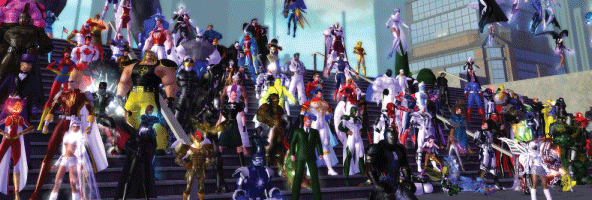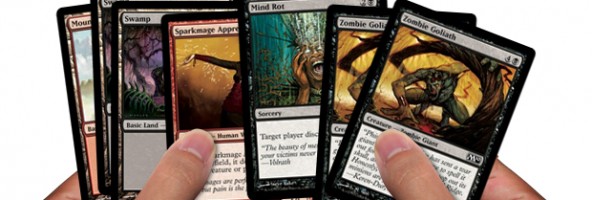Maintaining Critical Mass: F2P's Secret Weapon
Let's start by saying I don't disagree with anything Jeremy Gaffney said. The WildStar executive producer said in a recent interview that his game wasn't going free-to-play because:
“Different games with different business models work in a very different fashion. If you look at City of Heroes [which Gaffney produced] compared to Guild Wars, it looks like City of Heroes is a smaller game.
“And it is, fewer people play City of Heroes, they peaked out at - I don’t know the numbers - something like 200,000. But 200,000 subscribers paying $15 a month, if you do the math, that makes about as much money as selling 6 million boxes, if they last long enough.”
Comparing active subs to total copies sold is apples to oranges, but I think we can all agree with the basic notion that a F2P game with X active players makes less money than a sub game with X players. A sub game can get by with far fewer players – say, X divided by Y. But what is Y?
Y probably isn't 30 (6 million divided by 200,000), but it's something. Let's suppose Y = 5. So a F2P game with 1 million players brings in about the same money as a sub game with 200,000 players. That might be true at those numbers, and any high-profile game, like WildStar certainly is, will manage to do at least that well at launch.
But what happens after launch?
As we've seen time and time again, MMOs are more likely to lose players after launch rather than gain them. And when MMOs lose players, they become less entertaining for those remaining; there are fewer players to do things with, and thus those remaining players tend to leave, and the process is a vicious cycle that repeats itself until only a hardcore core is left – or the game is so unsustainable it shuts down.
This is called a game's critical mass: the number of players that an MMO needs in order to continue to provide a good experience for its existing players and group content. It's one of the reasons we see more small-group and solo-friendly content in MMOs these days. Simply put, it's easier to find enough people to run five-man content than it is to find 10, 20, or 40 people, especially in a sparsely populated game.
But talking about hundreds of thousands or millions of players is generally beyond our scope of understanding. Let's take a smaller example that we might be more familiar with: trading-card games.
Suppose a store runs tournaments for two TCGs. Game A is cheaper to get into and thus draws a larger crowd – say, about 50 people per week. Game B is more expensive or exclusive and thus draws only about 10 people per week. Both games actually bring in the same amount of money, so the store is happy with both.
In my experience, you need about six to eight people in a regular tournament group to have an enjoyable experience – that's the critical mass. Any fewer than that and you just run up against the same people running the same decks, week in and week out, which gets boring fast.
Suppose both games lose 20% of their player base – people move away, don't have enough time, or simply lose interest. Now Game A still has a healthy 40 players, but Game B is a lot iffier, with only eight players. Another 20% vanish. Game A still has 30 players, but Game B is on life support, with just six players left. Another loss would still keep Game A viable at 20 players but would probably destroy Game B. In other words, you wouldn't have four B players left, still bringing in 1/5 the income of Game A – you'd have zero, because the remaining players would just stop coming.
It's easy to see the parallel I'm drawing. How many of you have started out in a plus-sized guild at a game's launch, only to see it dwindle down to a fraction of its former self later? And how many of you have stopped playing a game you otherwise enjoyed because most of your friends/guildmates left or it became too difficult to find enough random people to form a party?
I'm not saying that F2P is automatically better than P2P because of this scenario or that WildStar – or for that matter, The Elder Scrolls Online or Final Fantasy XIV – will suffer a slow, agonizing death as they bleed subscriptions and fall below the critical mass needed to sustain an active player base. Every MMO developer goes into a new project thinking that they'll grow the game beyond its initial sales and active player base, even though relatively few do. If nothing else, devs should have a “hope for the best, plan for the worst” kind of approach.
I'd be curious to see how many games that switched from subs to F2P did so not because they were at that moment unprofitable but because the people in charge could see the downward trend and could think of no other way of reversing it than by injecting new players through F2P – even if those new players never paid a dime. As Wargaming's Victor Kislyi once said, they see free players not as moochers, scamming the company for a free ride, but as content, helping to ensure there's enough for the paying players to do.
Gaffney's right in saying that F2P isn't a “magic bullet.” But there's also more to the equation than just the simple notion that if 1/5 of players in a P2P game pay, then a F2P game is exactly as profitable as a P2P one with 1/5 the players. Sometimes, 1/5 the players is just too far below the critical mass to keep an online game alive. Once you dive below that number, it's usually a one-way trip to the bottom.
About the Author

Jason Winter is a veteran gaming journalist, he brings a wide range of experience to MMOBomb, including two years with Beckett Media where he served as the editor of the leading gaming magazine Massive Online Gamer. He has also written professionally for several gaming websites.
More Stories by Jason WinterRead Next

Feature
Whose Fault Are The Freeloaders?
Every free-to-play game has them.
You May Enjoy

The first of three questlines is now available.

It’s time to stop the Cult of Vul.

The update adds a ‘Beginner’s Guide’ for those just getting started.

In the era of multiple monetization methods, I just wonder how much a "season pass" does for most games.



But games like Devil May Cry series, with a ton of button combination effects; last longer in the long run because the creativity of it makes you ignore the grind as a chore. (after you done it for so long.) And see it as a creativity match and how to make your combos look like a blockbuster movie character lol. I love Devil May Crys battle on air till you stop doing combos, floor bounce smash, and matrix air jumping , shooting maneuvers.
Which sets the game apart and gives the player much more to look forward to and continue the ride longer, while he try's out more games in the long run.
Even if you were a top notch analyst, it is very hard to determine revenue for free to play games compared to subscription. You can tell this is true because of the consistent two words use, if's and but's. This usually means if they can last. Subscription based games are more confident with what they have to offer and have a more accurate view on how the company is going to do. a lot of companies don't make shit for a while, just because of that fact, they need to pay off the money that has been loans and I don't want to hear about "They got all the money from donations" because a lot of them started the company with loans.
Note: converting from P2P after MANY years to free to play isn't bad at all. Stuff gets outdated but people still play it. Their outdated shit is much better than many of these new free to play bs.
PS when I see free to play, I hear slot machines running.
Then you have games like swtor which were great to start but faltered in the endgame.Not giving people enough to do until new content was made.And there are the countless repetitive mmos where story is barely there and the gameplay gets dull after a few hours.
If devs/publishers want to have a p2p model the game has to be good.But even a mmo that starts as a f2p has to be good.Cause both business models are designed to part you from your money.But if the game is crap your not gonna spend money.Which means making sure the game is playable,has a good variety content,a good quantity of content and that content is high quality.
If a dev delivers that,the number of players will increase after launch.Cause as others have said people will tell their friends.Who tell other people and so on.Most publishers fail to realize word of mouth will do more for their success then advertising alone.But regardless every mmo dies down.
there have been a lot of mobas lately struggling to create a real competitive atmosphere. in those cases i'd say the critical mass to create a functioning ladder system is about 10,000 players.
thank you and goodnight
Look at League of Legends, it was small playerbase after beta, but the game was so well done in terms of gameplay and bussiness model, that as former beta player I could see how it playerbase skyrocket and break servers, month after month aftter release of game.
So plan for the worst, if you cant make a good game.
So if it takes for me to pay for the box and later for subscription, but in return I get really awesome game, that is not grind-fest and not pay to win and have enough content and is not in beta-state when it's released, I would gladly give my money to that company.